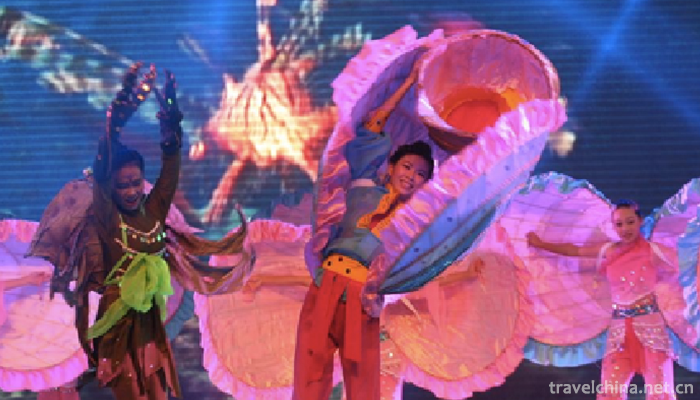Stories of Marine Animals
Marine animal stories are mainly handed down orally. The traditional folklore stories circulated in the islands for a long time have been formed and disseminated in Dongtou County, Zhejiang Province for nearly 200 years. These stories have unique plots, reflecting the survival wisdom and aesthetic concept of the islanders. In 2008, the story of Dongtou marine animals was listed on the list of intangible cultural heritage in Zhejiang Province.
In May 2011, the marine animal stories declared by Dongtou County of Zhejiang Province were listed in the third batch of national intangible cultural heritage list with the approval of the State Council.
historical origin
Marine animal stories are collective creations of the working people in fishing areas. They have been circulating on the island for a long time, mainly by word of mouth. It regards marine animals as the main characters, uses personification and reflects people's thoughts, feelings and various social phenomena through the relationship between animals.
Dongtou is the blending place of southern Fujian culture and Dongou culture. Dongtou fishing ground is the second largest fishing ground in Zhejiang province after Zhoushan. During the fishing news, Zeng gathered fishing boats from Jiangsu, Zhejiang, Shanghai, Fujian and Guangdong provinces. The special historical origins and geographical advantages make Dongtou fishermen and the masses draw the essence of the oral literature of the coastal people.
From 1979 to 1987, more than 200 legends and stories about marine animals were collected in Dongtou County, including stories about fish and shrimp changing into medicine, stories about Dragon palace, people and fish. More than one hundred stories of marine animals with specific meanings are arranged into more than 80 articles. After these stories were published, they had great repercussions. Incomed in the collection of these stories, "Fish Stories in the East China Sea", it won the second prize of the first national folk literature works (1972-1982). Many other works have won the Zhejiang Folk Literature Award.
primary coverage
Marine animal stories are folk stories with marine animals as the main characters. Before the "Cultural Revolution" of the last century, such stories were rarely published in China.
Dongtou County, Zhejiang Province, is the blending place of southern Fujian culture and Dongou culture. Islands immigrants come from southern Fujian and surrounding counties in Wenzhou area. The Dongtou Fishing Ground is the second largest fishing ground in Zhejiang Province. This special historical origin and geographical advantages make the Dongtou Marine Animal Stories abundant and high quality. The story of marine animals has been formed and spread in Dongtou for at least 200 years. Chen Yichen, the representative of the story, was born in 1904. At present, there are more than 10 old people who can tell such stories in Dongtou. In addition, many of the tour guides and students have learned to tell them.
In the 1980s, more than 200 legends and stories about marine animals were collected in Dongtou County, Zhejiang Province, which belong to marine animal stories with specific meanings.
Nearly 100 articles, collating more than 80 articles. After these stories were published, they had great repercussions and were praised by many experts and scholars in the field of folk literature throughout the country.
It "opens up a new field for our folk tales" and "is extremely valuable for the study of folk tales". One of the special collections, "Fish Causes in the East China Sea"
She won the second prize of the first national folk literature works (1972-1982), and many other works won the Zhejiang folk literature prize.
Inheritance significance
The important role of the story of marine animals lies in its narration of the living habits of marine animals, which is a textbook for the popularization of marine animals science. The story has a clear outlook on right and wrong, as well as a realistic enlightening significance. And these stories have been widely loved by teenagers. Some representative works are classic lectures of student story contest, and some texts have become the material of second creation. Therefore, they play a very important role in teenagers'cognitive education and quality education. At the same time, the dissemination of marine animal stories has also been welcomed by the guests who come to Dongtou, bringing about the development of tourism economy in this national 4A-level scenic spot.
It's a huge boost.

0 Questions
Ask a Question
Your email address will not be published.